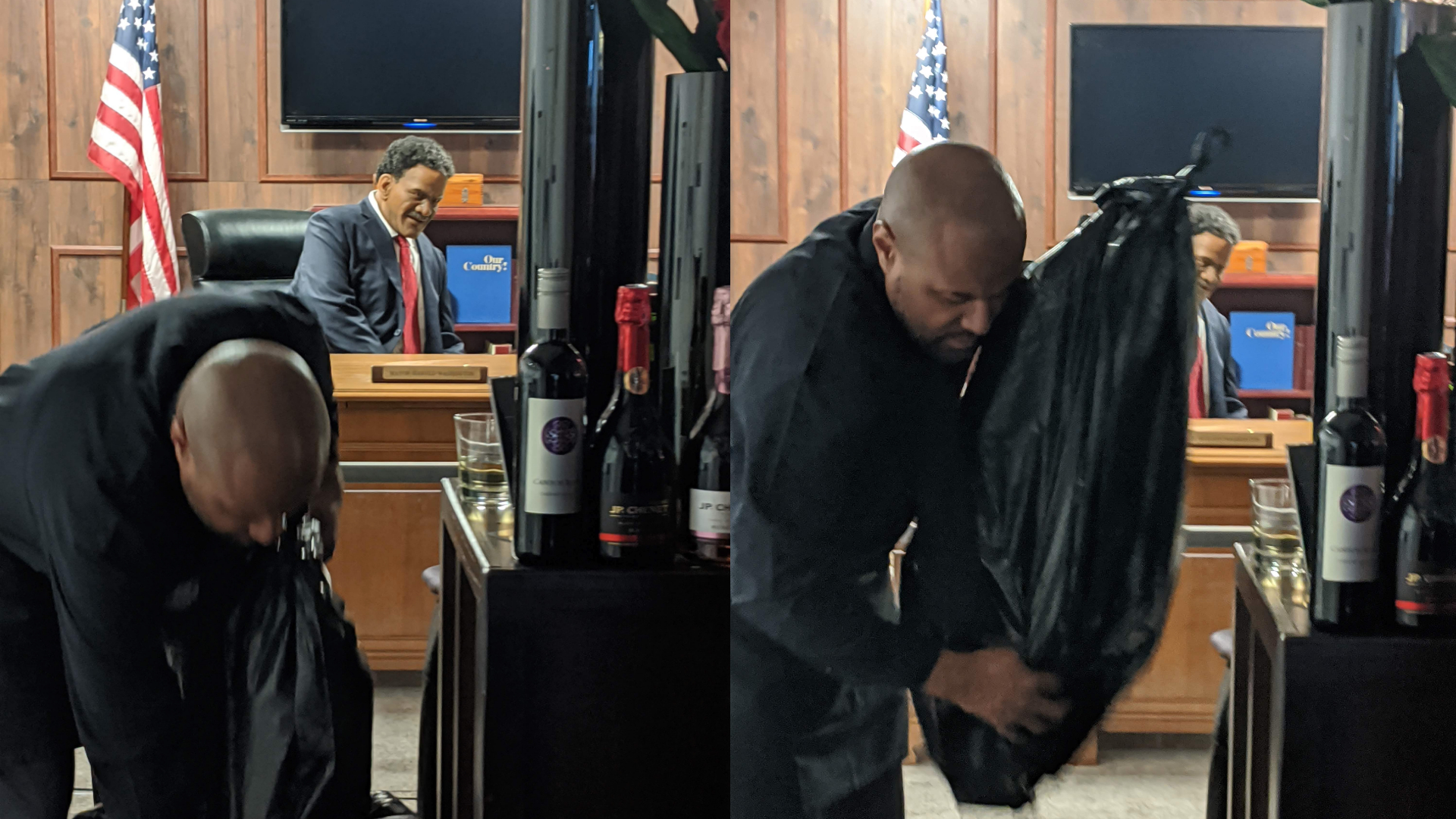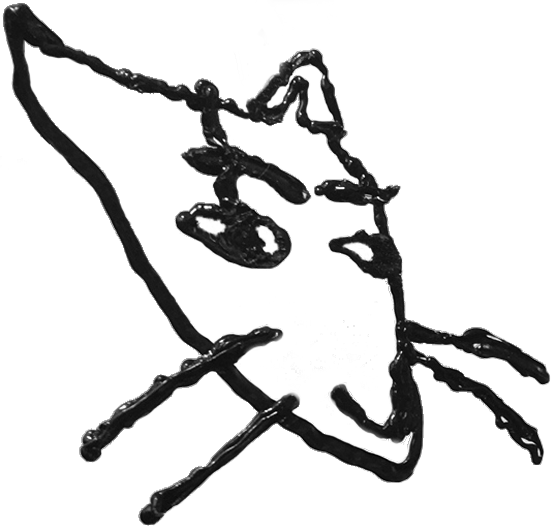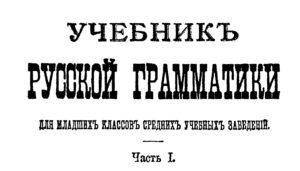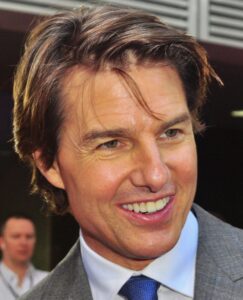In February I reported on the opening of a Martin Luther King virtual reality exhibit. It was called “The March” and sponsored by American Family Insurance and TIME Magazine — Chicago’s DuSable Museum of African American History hosted the traveling exhibition, evidently in a bid to earn some money. This particular exhibit centered an immersive re-creation of the 1963 March on Washington for Jobs and Freedom, complete with a 3D rendering of Dr. King.
The promotional materials suggested it would be a PR stunt, with King’s children and insurance executives both in attendance — and this excited me, because I like to go to PR stunts and drink champagne. There is never any reason I should be there, and I get to laugh at how absurd the world is, and what a mockery advertisements make of life. On these occasions I will sometimes try to insinuate that I understand the plight of the PR person who is whisking me around, making sure I have a good time and learning only what I should learn. But they never take the bait, and I am left to impute reserves of pain hidden behind their energy and hospitality. I was in a good mood that night, even though it was cold and ugly out, the period of winter in Chicago that has nothing to commend it. I rode over on a rented bike.
The bike station by the DuSable was located across a field of snow. The snow’s edges had absorbed mud and gasoline from Garfield Boulevard, and the wet warmth of the days prior gave it a defeated look, so that it no longer recalled Christmas, but rather, homelessness, and a dirty over-burdened life.
Two blacked out Chevy Suburbans were parked outside the museum, and a hired guard walked a German Shepherd in circles around the trucks, calling its name over and over: “Gary. Gary. Gary.” His tactical pants and vigor suggested that he dreamed of wars — inflected his daily work with the feeling of Riyadhs and Baghdads of Tom Clancy movies. The other guards, all of them Black, looked like they were just working. The excited guard waved the dog’s snout over my bag and allowed me inside. A red carpet had been laid out and PR staffers from TIME used their smart watches in the museum entranceway to communicate orders. Farther on, waiters walked the corridors carrying silver trays. By the coatroom, three men in good suits discussed the cost of hologram rights for Black celebrities. “You’d be surprised at how cheap Travis Scott is,” said one.
A PR woman with blond hair and a gold sequined dress introduced herself. She wore a smart watch in which I could see three colored rings, one displaying how many steps she had walked in the day, another her heart rate and another the calories she had burned. She explained that she had not yet seen the exhibit but that she thought she would cry when she saw animated King come to life. A journalist from a local parents magazine agreed that she would also be moved upon seeing his speech in this new way. We all walked to the exhibit space and then entered the first room. A small space, it was entirely black save for a strip of light on the floor. The strip of light changed colors as Rosa Parks, Fred Gray, and other civil rights activists spoke.
When Rosa Parks discussed her experience with the Montgomery bus boycott, for example, the light-strip turned red, to cue a red feeling. I scrambled to quote her for my paper but didn’t get anything down. The cameraman from CBS was filming me and I kept looking at him. When this ended, a projection of the moon and the words MARCH ON appeared on the door to the next room. The door on which the moon was projected opened automatically, like one of the entry ports in Star Wars, and the next room was covered in points of light that resembled stars. White stars decorated the black walls here, and young, Black museum staffers worked the room, helping us into our headsets, taking cautious orders from an older, meek white engineer who fiddled with his hands and looked on their work with quick and perceptive glances. A young Black museum staffer helped me into my VR headset, where I saw an all black space with white stars.
He whispered instructions in my ear via a microphone, about how to stay in bounds of the virtual scene, and how to view the world. It stirred a pleasant feeling on my neck. Every time he spoke I had the same feeling, which could be revived if I moved outside the bounds of the animated scene. The cameraman filmed me walking outside the bounds, so that, the next day, I saw myself on TV with my chin fat balled-up and the silver block covering my eyes. I looked like a caricature of my generation run in a conservative, Facebook-based “newspaper.” The Chicago Tribune ran wonderful photos of some of the insurance executives in their nice suits gazing on the virtual scene with a proprietary air.
In the simulation, I was ported all around; first to Constitution Avenue, where thousands upon thousands of animated bodies marched, then to the Washington Mall, then to King’s Podium.
As animated King was set to speak, I was ported into a gray wall that bisected my digital body. Perhaps because of where I stood at the edge of the room, I found, after a few moments of confusion, that I had actually been shoved into King’s podium. Disoriented, I looked all around me for a way out, then saw a Black man’s forehead, peeking out over the little wall like a sun. I stepped back, and there he was, VR MLK. The way my perspective was set up, I couldn’t have been more than three feet tall.
King appeared very tall, with the sunlight reflecting on his forehead and on his gold ring. The hairs on his fingers were visible, and so were the pores on his hands. His motions were more convincing than the marchers—because motivational speaker and Martin Luther King re-enactor Stephen Ferguson had been motion-tracked for the scene. The result was that the figure moved just like the real one. The animators took some license by turning the crowd behind me into a swarm of fireflies, which gathered by the stage as King spoke. And the color was sapped from the scene, save for the glowing fireflies and animated King, so that it looked like one of those sentimental photographs inside of dollar store picture frames of lone red roses set against gray worlds.
When King finished speaking, he turned to stare at me alone and the crowd of fireflies gathered under my feet, as if to join him in saying, “You are the chosen one…”… of the civil rights movement? Then it ended and I went into another room.
All this lurching around was so disorienting that I could not think about the historical scenes – I did not have an experience of the moment. Indeed, if there was anything moving about this experience, it was not seeing animated King speak — there were too many distracting details, and there was too much interest in turning my head around. Rather, it was the feeling of being adjusted and gently corrected by the museum staffers; their quiet, benevolent voices (“just take a step back”), the hand on my shoulder guiding me back into place — this was the first time I have had such a remarkably physical experience of being told where to look in history. That it came from a real Black person, taking orders from a white engineer, who through him was telling me how to look at a fake Black person, in a Black history museum guarded by Black hired guards overseen by a white military dreamer, in a neighborhood of overwhelming affluence, surrounded by Black poverty, kept at bay by Black hired security guards overseen by a grotesquely rich and mostly white university – well this situation, this virtual and real racial situation, the connections, whatever they were, they were not lost on me. Not at all.
And so I intimated my feelings to the camera man and the parents magazine writer, but neither took the bait. The cameraman seemed indifferent, as if the experience had rolled right off him, and the journalist evidently had already packaged the story in her head. So, feeling somewhat alone, I went out to solicit and then dutifully record hackneyed remarks of my own, casually dangerous and gaseous phrases from the exhibit’s creators. “You know, this way, the kids get to really experience history.” “This is more immersive than books.”
Nearby the bar, several tall insurance executives were laughing and smiling with strong, vigorous smiles. There were two MLK themed drinks that night, one called the “Mighty Stream,” with lemon, and the “King,” with peach purée. I chose the Mighty Stream and introduced myself to the tech specialist who had earlier been in the room with me. He explained that he had created the computer systems underlying the exhibit and was there to make it work properly. Loading so many thousands of people in real time, so many hairs on Kings hand, all available for inspection in any direction the viewer turns their head, required enormous computing power, he explained. Later he said that this enormous power was also used, in his capacity as a VR consultant, to design immersive models for mining companies around the world. However, he did not say if he had many exhibits where you get to be a miner in Africa or Asia, and at the end fireflies gather around your body, dead at thirty three.
A making-of video for the exhibit explained how they made King’s face. The making-of video showed an MLK lookalike stepping into a sphere of cameras that captured his face from every angle, all of them flashing at different moments. Each image was then combined with some kind of software that represented the different sides of his face side by side in different panes, as if they were different rooms in a prison guard’s monitor. These spherical facial capture rigs, which move the face of one person onto another, actually look like futuristic jail cells, new forms of solitary confinement designed to erase memories. When I later Googled the 3D facial model, I learned that it was TV cop and SWAT team actor Ty Brittingham, who also played an FBI informant on People Magazine Investigates.
Animated King was therefore a centaur, with a TV FBI man for the head (King, incidentally, had received an anonymous letter from the FBI encouraging him to kill himself) and a motivational speaker for the body.
Animated King, in addition to being part of the exhibit, had also made it onto the cover of TIME, where he looked out with an expression of humble determination much like the expression worn by Bill Gates, Nancy Pelosi, Dwayne the Rock Johnson, Mohammad Bin Salman, and Taylor Swift on their own respective TIME covers. A single style unites these portraits, a style of ecstatic, dizzying fidelity, with subjects’ eyes aglow with the future, a future as bright and dated as Times Square. Evidently the same bright dream animates the humble expressions of every TIME notable. Though it might entail, depending on the person, diversifying wrestling pictures, bombing Yemen, or fighting for basic rights for Black people, each face seems to emanate the same compromising, questing, middling vision. Somehow it all seems of a piece with the space race; for TIME perhaps everything has the meaning of the space race, with its twin ethos of technological utopianism and military supremacy.
In the painstaking labor of recreating Kings face one can see a new and characteristically American method of destroying history, distinct from Soviet-style erasure in that it is more a series of brightening, smoothing, and stretching treatments than outright cuts from the record.
More than 300 people and three years’ time had gone into the creation of this animated man— Viola Davis had worked on it as a producer, and King’s children had come to the show. And all this effort meant that we had to like it and bear its cost with smiles on our faces; the small, good museum needed the money, so forced congratulations and catered crab cakes passed throughout the main hall all night long. White lights flashed over and over on the bodies of important persons passing through the camera range; s on Bernice King and Martin Luther King III, on Viola Davis, on Cynthia Nixon, on American Family Insurance executives. Everyone smiled under mosaic frescoes depicting the museum’s founders, under Margaret Burroughs, a teacher, communist, and muralist who trained in Mexico under Diego Rivera, and helped found the Chicago Black Arts Movement; and beneath her husband Charles Burroughs, also a teacher and organizer, who grew up in the USSR, drove trucks for the Red Army, and then came to educate Black youth in Chicago. The big pixels of mosaic tiles rendered their life simply, refusing fidelity to pores in favor of fidelity to their persons. The PR staffer from Time asked if I wished to talk to the Midwest CEO of American Family Insurance, and I obliged. At this point, I was slightly drunk, having had two Mighty Streams.
Then a champagne bottle broke in another room and an older Black waitress swept it away, arranging a Japanese folding screen to hide her broom. There was something about the way she hid her work which, in suggesting it was a sight best hidden from the attendees, at last tipped my growing contempt into anger and sadness — so I left, without talking to the executive. Then I had another insurance-sponsored experience, riding an identical Blue Cross Blue Shield Insurance rental bike down 55th street, past the Ronald McDonald House for hospital patients who cannot afford to rent hotel rooms, and past the garish new University of Chicago dorms, which look like a hotel on the inside, and cost $22 million dollars to build. My face felt warm and everything around me was imbued with my anger, so that the world looked bright like the headset I wore, bright like the blue-light cop cameras on every corner. Strapped on top of light-posts, shooting people from all angles, they are also like a cage of cameras, which , in their aspiration, might one day enable not only the creation of individual 3D faces for a complete police database, but a 3D rendering of the entire criminal city.
I took some notes in a university building stairwell, the thrust of which was just this: that no amount of VR Kings will make history vivid, bring history to life as an experience, much less an animating source of activity for present afflictions — rather, what these things do is distract, impress, and dislocate, like the entertainment that prevents us from addressing history.
Though this history is of course still around, on the South Side of Chicago. Where I stood, east of the Museum at the University of Chicago, a group of private hired guards stood just outside.
Working all night in the winter, almost all are Black. They come from the surrounding neighborhoods, to which they return in the early morning. These neighborhoods begin at the shuttered storefronts of 63rd street, itself the product of fifty years of disinvestment, job loss, red-lining, aggressive policing, exclusionary housing laws, and predatory real-estate schemes, driven in large part by the University, a school with an endowment of $8.5 billion. The guards are not allowed to unionize or wear their own coats. Their neighborhoods have lost hundreds of thousands of people since the 1980s. King’s words at the march, so thoroughly exhausted by associations with shows like this, debased through repetition and empty invocation, still cut through as a description of their situation: “One hundred years later, the Negro is still languishing in the corners of American society and finds himself in exile in his own land… One hundred years later, the Negro lives on a lonely island of poverty in the midst of a vast ocean of material prosperity.” Now Black people are enlisted as guards of the islands in which they cannot live — their employment, outside as in the exhibit, is to redirect the gaze of wealthy audiences.
The DuSable is a fine museum and they know the neighborhoods and their dire situation — they invested in the exhibit to make money, which they desperately needed, and then the pandemic happened, and they lost it. No point being too mad over another gimmick.
As I sobered up, I read a short article about Charles Bethea, a former curator at the DuSable. In it, he justified his decision to install a robot version of Chicago’s first Black mayor within the museum, saying: “You have to strike a balance between education and entertainment.” This is more honest than the claims I heard about virtual reality increasing history’s importance — and I have less of a problem with this kind of pragmatism, and no problem at all with the Harold Washington robot. In fact I really like him.
He sat just behind the Martin Luther King cocktail table at the exhibit, his neck slumped over, as if hit with an arrow, his always open eyes cast to the ground. He was manufactured by a company that also made drum-playing gorillas. He cannot tell you much about history, much less reawaken it — he may produce a feeling of estrangement even more intense than the VR show. But perhaps for this reason, I have always liked Robot Washington. He is so far from convincing, that the exhibit has its own (admittedly unintended) historical feeling — like a quaint dream of the past, when people in all their innocence thought that some technical trick could awaken historical understanding, motion, freedom.
Trying to revive the show somewhat, the museum had partnered with Google to release an app that allowed visitors to take pictures with a hologram of Mayor Washington, whose size one could adjust by tugging at his head and feet. A curator told me that children had mostly shrunk him and placed Chicago’s first Black mayor on their shoulders, like a parrot.
One day I went to see Robot Washington, riding a bike from the same dock and then through Washington park. Once home to radical activity, it has basically emptied out, with some baseball fields and drug dealers taking the place of gatherings led by Sun Ra, Kenneth Rexroth, and the Black Panther Party. In response to a spate of recent homicides in the park, members of the community organization My Block My Hood My City put plastic cups into the holes in the fence of the baseball diamond and tennis courts, reading out “Respect Life.” A flock of monk parakeets nest in the trees around here, having been imported as pets in the 1950s.
Inside the museum I pressed the history button. Mayor Washington rose, spoke about his career, and at the end of his recorded speech said: “Those who remember me will still believe that I had a tremendous impact on Chicago. But, I will admit, I do miss my birds. Yeah, my birds. If it’s a spring or summer day, when you leave the museum, look up at the trees and say hello to my green feathered friends. Goodbye for now.”




